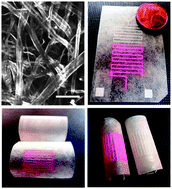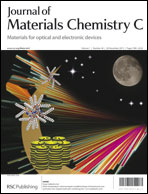Random laser emission from a paper-based device
Abstract
Random laser emission is obtained from a fluidic paper-based device realized by conventional soft-lithography techniques on common, flexible, renewable and biocompatible commercial paper. The device is realized exclusively on paper by creating microfluidic porous channels on the cellulose fibres, in which a laser dye (Rhodamine B) can flow by capillarity. The modulation of the random lasing characteristics, in terms of threshold and spectral position, can be tailored by acting on the confinement induced by the lithographic process as well as on the shape and functionalization at the interface of the emitting regions.


 Please wait while we load your content...
Please wait while we load your content...